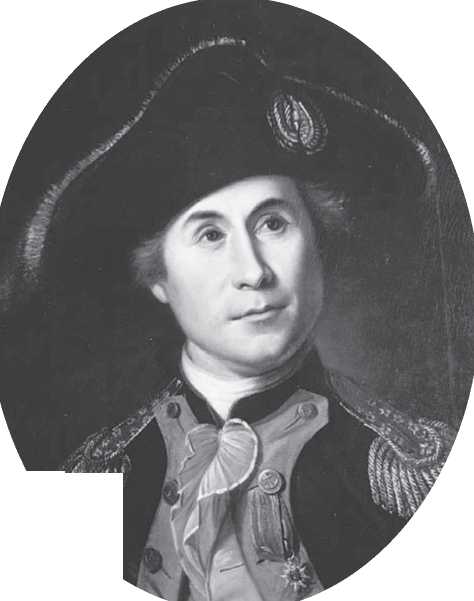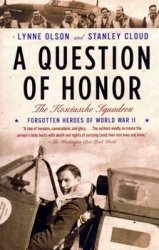Although the United States Constitution does not specifically mention Jews, the absence of a test act (a provision requiring an oath affirming faith in a specific religion) and the Bill Of Rights guaranteeing religious liberty in essence granted Jews the honor of citizenship. The United States was thus the first non-Jewish country, ancient or modern, that included Jews as political equals. Official tolerance of religion is one of the most enduring legacies of the American Revolution.
At the time of the Revolutionary War (1775-83), approximately 2,500 Jews lived in the English colonies, or about 1 percent of the general population. Most Jews in the revolutionary era lived in urban areas and worked as artisans and merchants. Some of the most celebrated merchants of the period included Barnard and Michael Gratz of Philadelphia, the Lopez family of Newport, and Isaac DaCosta of Charleston. Several port cities became centers of Jewish life, including, New York, Newport, Charleston, Savannah, Philadelphia, and New Haven. Like Quaker and Huguenot merchants, Jews enjoyed special cultural relationships with coreligionists who still lived in western Europe and with those who had moved to the Caribbean. These connections greatly assisted the development of trade and personal interaction within the larger Atlantic world. Moreover, ritual necessities such as prayer books and special silverware were produced and distributed throughout the colonies, providing links between communities. Mercantile ties were also solidified through kinship relations. Internationally arranged marriages were a common means of bringing merchant houses together.
Jewish communities tended to follow a simple pattern of religious development. First, communities usually employed a ritual slaughterer, which allowed Jews to enjoy kosher meat. A religious leader known as a hazan would be brought into the community, as the Jews of New York did in 1757 when they hired one from London to lead services and to teach Hebrew, English, and Spanish to their children. Private homes served as the site of prayer meetings until synagogue complexes were developed. These synagogues usually included a place of worship, a ritual bath, and a schoolhouse. The Touro Synagogue in Newport still stands as one of the earliest examples of colonial Jewish architecture.
Jews were active in the resistance movement (1764-75) and participated on both sides of the Revolutionary War. Jewish merchants during the Stamp Act crisis of 1765 signed the non-importation agreement promising to stop English imports. Later, New York’s Jewish merchants protested the Tea Act (1773). Once the war broke out, the Jewish community, like the larger community, was divided. Some men, like the affluent David Franks, became Loyalists, while others strove to remain neutral. A few shifted sides during the conflict. Many supported independence. In 1775 Mordecai Sheftall of Savannah ordered English captains to leave port without unloading their cargoes. Throughout the country, Jews volunteered for military service in the militia and in the Continental army. Between 25 and 35 Jews participated in the Battle of Beaufort in 1779 and during the siege of Charleston in 1780.
Perhaps the most famous Jewish Whig during the war was Haym Salomon, who has sometimes mistakenly been called the “financier of the Revolution.” Salomon began the war in obscurity, probably serving as sutler with the revolutionary forces on the Canadian border in 1776. When he returned to New York City, which by then was occupied by the British, he was arrested. Somehow he obtained his release, began working as a supplier to Hessian troops, and made a small fortune. However, Salomon was also working as an agent for the United States, inducing Hessians to desert and assisting escaping revolutionary and French prisoners. When he was betrayed in August 1778, he had to leave the city and move to Philadelphia. By 1781 Salomon had reestablished his fortune and began working with Robert Morris on the finances of the U. S. government. Salomon became a bill broker, selling bills and raising cash to supply the army in the last years of the war. While he did not exactly finance the revolution, he had an important job in facilitating the financial arrangements made by Morris.
When the war was over, the Jewish community in the United States enjoyed a transition that distinguished it from that of their European counterparts. In Europe, Jews belonged to a legal category separate from all other natives, while they comprised an official and distinct social and political body in which participation was mandated both by the Jewish community and by the host European government. In the United States, however, association with the Jewish community was completely voluntary. The Constitution of the United States prohibited a religious test for government office (Article VI), and the First Amendment prohibited Congress from establishing any religion, thus permitting Jews to participate as equal citizens on the federal level. President George Washington captured the significance of the change in Jewish legal and political status when he wrote warmheartedly to the congregation of the Newport synagogue that the government of the United States, “which gives to bigotry no sanction, to persecution no assistance, requires only that they who live under its protection, should demean themselves as good citizens.” State governments moved more slowly concerning religious liberty. While some states such as Virginia, quickly disestablished religion, others clung to some state support for specific denominations into the 19th century and limited the right of citizenship to Protestants. Pennsylvania, home to a large Jewish community, did not grant the privileges and immunities of citizenship to Jews until 1790. By 1820 most state constitutions (see also constitutions, state) eliminated religious qualifications that had kept Jews from participating in public affairs and government office, though Rhode Island, New Hampshire, and North Carolina maintained these religious requirements until later in the 19th century.
Further reading: Eli Faber, “A Time for Planting: The First Migration, 1654-1820” in The Jewish People in America, ed. Henry Feingold (Baltimore: Johns Hopkins University Press, 1992); Jacob Rader Marcus, United States Jewry, 1776—1985, vol. 1 (Detroit: Wayne State University Press, 1989); Samuel Rezneck, Unrecognized Patriots: The Jews in the American Revolution (Westport, Conn.: Greenwood Press, 1975).
Johnson, Sir John (1742-1830) government official Sir John Johnson was a royal Indian agent and an important landlord in the Mohawk River valley as was his father Sir William Johnson before him. During the Revolutionary War (1775-83) he remained loyal to the Crown and raised a regiment of his tenants and supporters to fight for the British. After the war he became an important Loyalist leader in Canada.
John Johnson was the eldest son and heir of Sir William Johnson and was the product of Sir William’s liaison with a Dutch woman named Catherine Weisenberg. By the beginning of the Revolutionary War, John Johnson was an important man in his own right, having been knighted in 1765 for his military service during Pontiac’s War (1763-64). When Sir William Johnson died in 1774, John Johnson inherited his father’s huge estates with thousands of Scottish and Scots-Irish tenants, many of whom had been British soldiers. He also inherited his father’s influence among Native Americans and became the most powerful man in the Mohawk Valley.
As the Revolutionary War broke out, Johnson supported King George III and, because of the personal devotion of his tenants and supporters, he recruited more than 1,000 men into his two battalions of the Kings Royal Regiment, the “Royal Greens.” It was Johnson’s intention to organize the settlers and Indians of the Mohawk Valley to fight the revolutionaries. However, in 1776, a superior force under General Philip Schuyler compelled Sir John to flee to Canada with his men.
During the early years of the war, Johnson and other Loyalist leaders were often able to return from Canada to check on their homes, spy, and sometimes carry out raids. However, they were never able to stay long for fear of capture. Johnson served with the British lieutenant colonel Barry St. Leger in his attack from Lake Ontario in the summer of 1777 and participated in the Battle of Oriskany (August 6, 1777). Following that campaign, he and several other Loyalist leaders, including his brother-in-law, Guy Johnson, participated in an often vicious border war. From Canada the “Royal Greens” periodically staged raids against revolutionary forces in the Mohawk Valley and adjoining areas. However, while the raids were an annoyance, they were never able to inflict any substantial damage. Johnson and his regiment spent the latter years of the war on garrison duty in Montreal.
Both during and following the Revolutionary War, tens of thousands of Loyalists fled across the border into Canada. With the end of hostilities, the British called on Sir John Johnson and other leaders to administer the resettlement of Loyalists along the upper St. Lawrence River. However, the British refused to re-create in Canada the large semifeudal estates that had existed in New York. This policy prevented powerful Loyalist leaders from reestablishing their dominant positions after the war. In the new Canadian settlements, the king was the only landlord and all Loyalists received grants of land. Nevertheless, despite his loss of property and power, Johnson remained influential among the Loyalist settlers. He lived in Montreal until the end of the war and eventually became superintendent of Indian affairs.
—Robert Lively
Jones, Absalom (1746-1818) abolitionist, African Methodist Episcopal priest
Born a slave in British colonial America, Absalom Jones became one of the leading free black activists of the early
American republic. Before his death in 1818, Jones helped found the Free African Society in Philadelphia (a mutual aid society dedicated to racial uplift through education and insurance), the first independent black church, and, with Richard Allen, coauthored the first copyrighted black pamphlet.
Jones was born to slavery in Delaware. He learned to read at an early age and acquired both a Bible and a spelling book before he was 16 years old. In the early 1760s, Jones went to Philadelphia with his master and worked in a dry-goods store. After a co-laborer helped him learn to write, Jones obtained permission from his master to attend a QuAKER-run school. Jones married in the 1770s and saved enough money to buy his wife out of bondage (thus allowing any children born after her freedom to be free as well). Jones remained in Philadelphia during the Revolutionary War (1775-83), purchasing his own freedom in 1784. Over the next three decades, Jones solidified his reputation as one of Philadelphia’s preeminent Alrican American leaders.
In the newly independent United States, Jones was in the vanguard of black activists who tried to use the ideals of the Revolution to attack racial subjugation. Pennsylvania had adopted the world’s first gradual abolition law in 1780, declaring that bondage would slowly but surely end in the Quaker State over the next few decades. Between the 1780s and early 1800s, Philadelphia’s African-American population swelled. Leaders such as Jones, Allen and James Forten created autonomous African-American institutions (in particular, African-American churches) to aid black Pennsylvanians in their transition from slavery to freedom. Jones and Allen eventually broke over denominational affiliations, although they remained friends. Allen gravitated toward Methodism while Jones founded St. Thomas’ African Episcopal Church in 1794. In 1804, Jones became the first black priest ordained by the Episcopalian Church.
Jones and Philadelphia’s other black leaders attempted to keep antislavery momentum going both in Pennsylvania and nationally. Allen, Jones, and Forten aided blacks falsely accused of being fugitive slaves, putting them in contact with white abolitionist lawyers. Jones and Allen also led an anti-slave trading petition drive in 1799 aimed at the United States Congress, meeting then in Philadelphia. The petition attempted to ban slave imports immediately, and gently urged Congress to consider a gradual abolition act for the nation. By a vote of 84 to 1, the petition was rejected.
Jones combated racial injustice by wielding his pen. When Philadelphia was ravaged by an epidemic of yellow fever in 1793 (see also disease and epidemics), and European Americans accused African Americans of robbing the stricken, Jones helped Richard Allen compose a rebuttal to the unjust charges. Entitled “A Narrative of the Proceedings of the Black People During the Late Awful Calamity in Philadelphia,” the pamphlet pointed out that African Americans aided European Americans even though they too suffered tremendous casualties from the epidemic. In addition, Jones and Allen attacked the root of the anti-black charges: slavery and racial injustice. If white Americans would free slaves and give them equal opportunities to succeed, they asserted, then Africans Americans would become valuable citizens. Jones published his own pamphlet in 1808, “A giving Sermon,” which celebrated the recent Congressional ban on the slave trade. In his last years, Jones joined Allen and Forten in opposing the American Colonization Society (formed in 1817), which sought to export free blacks from American shores.
Further reading: Gary B. Nash, Forging Freedom: The Formation of Philadelphia’s Black Community, 1745-1840 (Cambridge, Mass.: Harvard University Press, 1988); Richard Newman, Patrick Rael, Philip Lapsanky, eds., Pamphlets of Protest: An Anthology of Early African American Protest Writing (New York: Routledge, 2001); Julie Winch, Philadelphia’s Black Elite: Activism, Accommodation, and the Struggle for Autonomy, 1787-1848 (Philadelphia: Temple University Press, 1993).
—Richard Newman
Jones, John Paul (1747-1792) Continental navy officer
John Paul was born in Kirkcudbright in southwest Scotland, a region that borders the Solway Firth and the Irish Sea. Most local men were compelled to choose between the farm and the sea in seeking their livelihoods. Paul opted for the latter. At age 12 he went to sea as a ship’s boy aboard a merchant ship sailing between Britain, the West Indies, and Virginia. Over the next decade he gained wide experience and proved to be a capable mariner. By the age of 21 he was captaining merchant vessels plying the route between the West Indies and Britain. Paul, like most of his peers, could be ruthless in dealing with his subordinates. In 1769 he ordered a ship’s carpenter whipped. When the sailor died as a result of the punishment, Paul was charged with murder and subsequently cleared of wrongdoing. In 1773 his crew mutinied in the West Indies and Paul killed one of the mutineers. Fearing that he would not beat another murder charge, he fled to British North America and added the surname Jones to his name.
As an experienced mariner and man of action, John Paul Jones arrived in the colonies at a fortuitous time. Based on his experience and connections with revolutionary officials, which were a legacy of his prewar career as

Jfm
American naval officer John Paul Jones (Independence National Historical Park)
The master of merchant vessels, Jones obtained a commission as a lieutenant aboard the Alfred, one of the ships in the fledgling Continental navy. Jones proved himself to be a capable officer and was given command of the sloop Providence in 1776. In 1777 Jones was promoted to command of the ship Ranger with orders to wreak havoc on commerce in British waters. His most notable achievement as commander of the Ranger was a patrol in the Irish Sea in April 1778 during which Jones returned to the scenes of his boyhood, attacking Whitehaven on the English side of the Solway Firth and leading a quixotic raid in Kirkcubright-shire in a failed effort to capture the earl of Selkirk, whom he hoped to exchange for sailor prisoners of war. Nonetheless, the Ranger’s cruise was a success—Jones captured seven British prizes and many prisoners. He had, moreover, spread fear around coastal Britain and earned himself a notorious reputation.
In 1779 Jones led a small Franco-American squadron on another cruise in British waters. He commanded the Bonhomme Richard, a converted French merchant vessel named in honor of Benjamin Franklin’s “Poor Richard.” The squadron met with some success. On September 23 the Bonhomme Richard engaged in a bloody night battle with HMS Serapis off Flamborough Head in Yorkshire.
The two ships fought a close action and were badly damaged. When the captain of the Serapis asked whether Jones was willing to surrender the sinking Bonhomme Richard, Jones replied, “I have not yet begun to fight.” Eventually the captain of the Serapis struck his colors, and Jones and his crew won the most significant revolutionary naval victory of the war.
Jones was driven by a desire for fame and recognition, and he found these briefly after his victory over the Serapis. However, throughout his career in the Continental navy he was plagued with controversy. He was not a popular officer with his men, who often complained about his autocratic demeanor and viewed him as “ungratefull,” “deceitful,” and “arbitrary.” Within months of his victory against the Serapis, half the men under his command on the Alliance stole the ship while he was ashore, placed themselves under the command of Pierre Landis, who had previously commanded the Alliance, and sailed for the United States. After the war, Jones unsuccessfully sought to become the first admiral in the U. S. Navy. Frustrated, Jones served in the navy of Catherine the Great in Russia’s war with Turkey in 1788-89. Jones died in Paris in 1792. At the time of his death, Jones was trying to revive his reputation—he had sunk into relative obscurity—and obtain a commission in the French navy.
While privateers (see also privateering) captured thousands of British prizes at sea during the Revolutionary War (1775-83), the Continental navy made only a minor contribution to the final victory. Despite Jones’s individual heroics, the Continental navy could never seriously challenge the might of the Royal Navy during the war. Rather, it was the advent of the French navy in the struggle in 1778 that helped to shift the balance of the war at sea. Posterity has been kinder to Jones than were his contemporaries. With the growth of U. S. naval power during the 19th and 20th centuries, Jones has come to be viewed as the father of the U. S. Navy. The culmination of this transformation occurred in 1905 when Jones’s remains were exhumed in France for reburial in Annapolis, Maryland, where Jones is given perpetual homage. In death Jones has received that fame and approbation that he enjoyed only briefly in life.
Further reading: Samuel Eliot Morison, John Paul Jones: A Sailor’s Biography (Boston: Little, Brown, 1959).
—Francis D. Cogliano




 World History
World History









